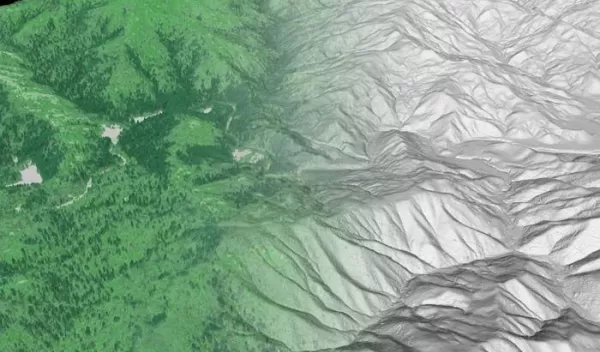
Life Leaves Subtle Signature on Lay of the Land
Mars looks more like Earth the more we see of the red planet's surface, but there's one big difference: complex life forms have existed on Earth for billions of years.
"The meandering stream channels, deltas and alluvial fans of Mars are all familiar to us here," said William Dietrich, a geologist at the University of California at Berkeley. "But we're looking at Mars from a distance. Up close and personal, the view of Earth is a very different one.
"Can we tell from topography alone that life pervades Earth?" wondered Dietrich and his colleagues.
They found, to their surprise, no overt signature of life in Earth's landforms, but a more muted signature does exist. The main topographical difference between an Earth teeming with life and one with no life, Dietrich concludes, is that life likely creates more of the rounded hills typical of Earth's vegetated areas, and fewer sharp, rocky ridges.
"It turns out that life creates a more subtle effect on the land," said Richard Lane, program director in the National Science Foundation's (NSF) Division of Earth Sciences. "The absence of life likely would lead to a planet with sharp hill slopes of exposed bedrock, which is not what Earth looks like."
Everywhere you look, "life is causing sediment to move downhill," Dietrich said. "Tree roots, gophers and wombats all dig into the soil and raise it, tearing up the underlying bedrock and turning it into rubble that tumbles downhill and leaves behind more rolling hills."
"Rounded hills are the expression of life's influence on geology," Dietrich said.
The research was supported by NSF's National Center for Earth-surface Dynamics and by NASA's Astrobiology Institute. The results were reported in the Jan. 26, 2006, issue of the journal Nature.


